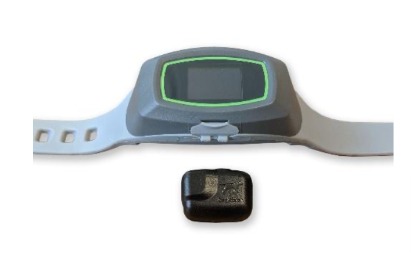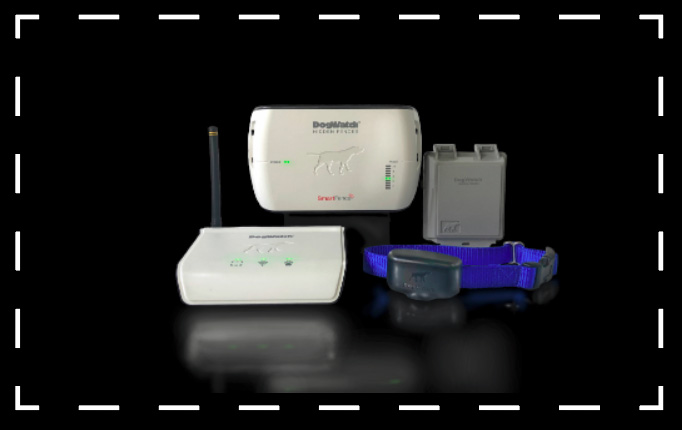A GPS invisible dog fence system is a relatively new endeavour for the electronic dog fence industry.
The GPS dog fence technology really only began making its presence around 2015, and since then, there have been several companies attempting to enter a market that has been dominated by the traditional style “wired” Hidden Fence system, or Invisible Fence ® since 1973.
In theory, the GPS Dog Fence system would allow for a “true wireless” dog fence design to operate on the dog owner’s property. This would typically be controlled in the traditional style GPS “geofence” of a perimeter design around the property that the dog fence GPS receiver collar would activate when approaching the desired perimeter set by the GPS.
If it worked properly, this would technically be the “golden goose” of dog fence containment systems. The idea of the dog’s, dog fence receiver collar essentially doing all of the work with regards to keeping him in is a novel breakthrough! A virtual dog fence boundary! No wires, pinpoint accuracy and the only piece of dog fence equipment is a small receiver worn by the dog on a traditional nylon dog collar!! Sounds like science fiction!!!
Well…in truth, that’s about where reality and the idea actually connect, as science fiction.
The hard reality is that GPS dog fences are a decade away from being all they claim to be.
Do GPS dog fences exist?
Yes, however, the current lineup of GPS dog Fences is far from being available with any reliability of supply, or any support to remedy electronics and programming issues! And worse…the training applications and protocols are a significant welfare constraint.
So… what’s to know about GPS dog fence systems! What brands are out there, and…which GPS dog fence is best?
Currently, there are 3 companies in North America that have “Geofence” GPS dog fence collars.
halo®, SpotOn® and Invisible Fence®.
All of these GPS dog fence systems are a DIY, and typically, an online buy.
These products contain one item, the receiver GPS dog collar, and its charger. You download the app from your app store, then begin to set up a profile. Once done, you subscribe to a monthly or annual service for the benefit of its primary features. Once fully charged up, then the customer attempts to introduce the dog to its boundaries.
All of these systems rely on good cellular service.
Only one brand of GPS electronic dog fence has a base station that formulates the desired boundary without complete reliance on a cellular service! This particular system uses a “hub” that assists in managing the GPS signal and helps keep the accuracy as stable as possible. It is the better of the three GPS dog fence systems available, although many of the technological discrepancies that exist with all of them remain with this unit.
The two remaining GPS dog fence systems rely on proper connectivity and are set up via your mobile phone. In short, it’s a combination of activating the GPS app and then set the specifics of the dog fence boundary you’d like the dog to stay within.
It’s a process that can take some time and relies on setting that boundary with a commitment to the dog’s “forever” zone.
So careful planning is involved, as once you choose that perimeter, it’s counter-productive to suddenly decide later that it wasn’t the correct dog fence boundary.
Once the dog fence boundary has been programmed and accepted on the app, then the dog is introduced to the GPS dog fence the same way a dog would be trained to the traditional Hidden Fence style dog fence.
A GPS dog fence is easy to set up, right?
Well…that depends on who sets it up.
Not everyone is tech-savvy, and more to the point, if a person isn’t tech-savvy, and is about to introduce their dog to an aversive style of training protocol, then it must be critically verified that the GPS dog fence system is operating consistently!
How would you know if a GPS dog fence is going to work? Or more importantly…are GPS dog fence systems safe?
There are a few pitfalls with a GPS dog fence system. It’s widely agreed without any contradiction that the cornerstone of proper dog fence containment is consistency.
The current primary issue with GPS invisible dog fences is they fluctuate the stimulation zones too broadly and make the boundary inconsistent! In other words, the boundary for the dog’s GPS dog fence collar could change up to 6 meters!!! Dog fence containment systems are one of the best tools to keep your dogs on your property; however, if done in a contrast to the animal welfare training principle, then there needs to be better technology.
Moving on to another constraint of a GPS dog fence system is the rechargeable collar. These GPS dog collars essentially need to be charged nearly every day!
Not the most practical way to stay consistent, nor is it safe with regards to being diligent with the dog fence collar protocol!
Consumers in 2022 may be prepared to charge various items, like phones and toothbrushes every day…but to charge a collar that’s meant to keep your dog safe and contained from escaping, isn’t what dog owners expect. Even brands that use the cable perimeter have a better minimum for battery replacement. The low end of the dog fencing market has a minimum replacement of around 4 months. Hidden Fence by DogWatch has dog fence receiver collars that have a battery replacement at around 4 months to 2 years! Big contrast!
The next major factor would be reliability!
As mentioned before, one manufacturer has a base station that helps provide more consistent delivery of a signal. Good, but still not adequate to safely contain your dog!
How do GPS dog fence collars compare to wired Dog Fence Hidden Fence collars?
Good question.
Basically, there are sophisticated software and components in both. “Branded” hidden fence collars have many advanced microprocessors and software, which makes these components reliable, safe and resistant to damage from tough dogs. “Unbranded” or “generic” dog fence collars (seen on eBay® or rogue websites by “part-timers”) don’t typically represent the dog fence system industry in any form. They are cheap, fragile and overall a welfare issue.
GPS dog fence collars have high-grade components as well, in addition to complex software. The issue for GPS collars is that the “over-engineering” spells problems for basic issues.
The main complaint by users of these GPS dog collars is the enormous size, bulky housing and how heavy they are. In short, anything smaller than a Labrador breed would look silly wearing one and would look like something from an early Star Trek episode from the ’60s.
Below is an image of the size comparison of a GPS dog fence collar, next to a professional grade Hidden Fence collar.


Not the most flattering images; hardly inspiring or increasing your desire for your pooch to wear one.
There is a massive difference and they are not very “advanced” looking considering the perception of being the “future”.
Cost of ownership for a GPS invisible dog fence?
Expensive!
The units themselves are in excess of USD$1500.00.
This is prior to the subscription service that can be as high as USD $90 per month for advanced features!
All of this is complete DIY.
Read reviews as far as what support is provided as an end-user and you will soon understand the frustration.
So what’s the verdict on the GPS dog fence in 2022?
FAIL!
Too big, too heavy, unreliable and a potential welfare constraint due to their underlying inconsistencies!
To top it all off…none of them will work in Australia due to the 2G network they operate on.
Since 2018, 2G networks are obsolete, so current GPS collars simply won’t work!
So… a big article for the climactic conclusion, but it was important to highlight the fact that GPS dog fence systems are about 5 years to a decade too early in the market.
ontact us to discuss your own dog problems so we can discuss a solution to help.


